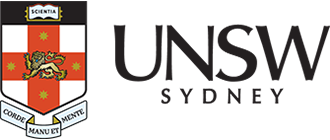X-ray Fluorescence & Absorption Spectroscopy Laboratory

Who we are
We perform X-ray induced fluorescence from solids enabling elemental analysis from ppm to percentage level. The laboratory is equipped with WD-XRF (wavelength-dispersive) and ED-XRF (energy-dispersive) spectrometers, enabling quantitative elemental analysis of bulk materials. We also host a μ-XRF spectrometer enabling elemental mapping or single-point elemental analysis with micron-scale spatial resolution. Our elemental combustion instruments are designed for C, H, N, S, and O analysis of organic solids.
In addition to XRF, the lab has an X-ray absorption fine structure (XAFS) instrument which offers both absorption and emission modes. This technique allows insights into materials' atomic-scale composition.
The lab also offers services for crushing, pressing, ashing, peroxidation, and loss on ignition.
Funding partners:
Capabilities
Instruments
-
The Zetium is a wavelength-dispersive X-ray fluorescence spectrometer for elemental analysis from 0.05 to 100wt%.
-
The Epsilon is an energy-dispersive X-ray fluorescence spectrometer for elemental analysis from 0.1 to 100wt%.
-
The Tornado is an energy-dispersive X-ray fluorescence spectrometer with focussing optics and a movable stage for elemental point analysis or elemental imaging of relatively large samples not suited for SEM-EDX.
-
The Elementar Macrocube is a combustion analyser for carbon, hydrogen, nitrogen and sulphur content analysis; Oxycube is a pyrolysis analyser for oxygen content analysis. These techniques are suitable for organic solid samples.
-
The EasyXAFS is an X-ray absorption spectrometer that provides information on the coordination state around a target atom, usually a transition metal or Lanthanide. It also has x-ray emission spectroscopy (XES) mode and provides information on oxidation state and spin state, and ligand identity.
Our people
Fees
Fee-for-Service (FFS) Sample Submission
- Sample submission forms are available on our website.
- Please complete the form with all the required information and submit it along with your samples.
- For any questions or clarification, please email us or visit in person at G41.
Charge rates
-
Internal Self-access $25/hr Service $70/sample Training (sample prepration/ instrument operation/ data processing) Additional $30/hr *Users to include GST charges
-
External (Other Universities/Govt. Dept.*) Self-access $50/hr XAFS Training (2 sessions) $500 XES training (2 sessions) $500 Sample preparation training $100 Service $100/sample *Users to include GST charges
-
Category Services UNSW Users FFSA
(*charge per sample)Majors (11 major element oxides + L.O.I.) Applications: WROXI $70 WD-XRF (Non-destructive) Application: Omnian $50 ED-XRF (Non-destructive) Application: Omnian $70 Protrace REE, Boron, and other programs (F, Cl, and oil analysis) Application: Protrace, Omnian fast, Boron etc. $70 Micro-XRF (point analysis/mapping) $70/$200-250 Peroxidation $30 Ashing $55 Crushing $25 Loss on Ignition (L.O.I.) only $15 DIY
(*charge per hour)
WD-XRF (Non-destructive) $50 Micro-XRF (point analysis/mapping) $35 Crushing $25 Notes:
- GST Charges: Payments not made via internal transfer will incur a 10% GST.
- Non-Routine Work: Charged at a higher rate.
- Bulk Discounts: Available for large batches of samples (more than 50).
- Fee Adjustments: All fees are subject to annual CPI increases.
*Users to include GST charges
How to access
The instruments are operated by the assigned technical staffs. However, in special cases, researchers may be able to undergo training and induction on specific instruments. Please contact Helen Wang or Tasmia Zaman should have any questions on accessing the facility.
-
- Contact Our Staff
Please email xrflab@unsw.edu.au to discuss your samples with our staff. Once confirmed, please complete and email a sample submission form to detail your sample requirements.
- Estimate Costs & Turnaround Time
Our staff will provide an estimate of costs and turnaround time using the sample submission form and arrange for you to deliver your samples to XRF Laboratory. - Analytical Results
Your sample will be analysed and the analytical results emailed to you.
- Contact Our Staff
-
- Contact Our Staff
Email xrflab@unsw.edu.au to discuss your samples and our staff will send you safety documents and arrange training for you. - Training
During the training session, you will run your own samples. If you need to use our facility for sample preparation, inform the staff in advance. - Instrument Booking
Once you are competent, you can book the instruments by emailing our staff.
- Contact Our Staff
Contact us
X-ray Fluorescence Laboratory
Room G41
June Griffith Building (Chemical Sciences F10)
UNSW Sydney NSW 2033
Phone: 02 9348 1006
Email: xrflab@unsw.edu.au
We like to hear from you. If you have questions, requests or ideas for collaboration, please complete the contact form and we will be in touch within five business days.
Resources
Get in touch about your project
We offer a range of services that can be tailored to your needs. Please send us an enquiry to get started.












